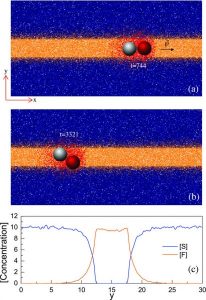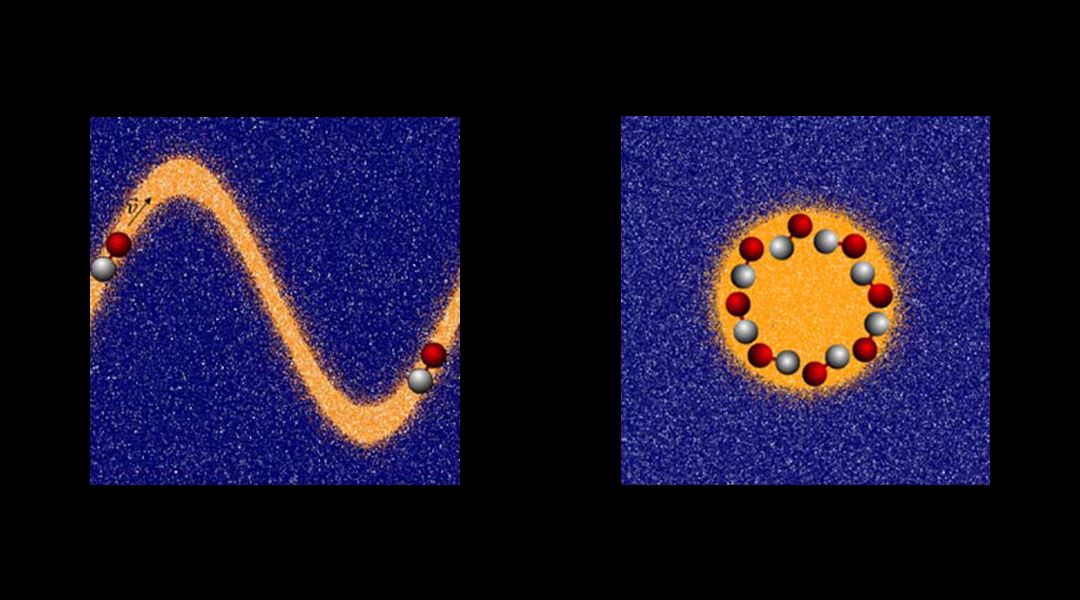Chemically powered motors that rely on chemical reactions to drive their motion are under investigation for multiple applications, including targeted drug delivery, motion-based biosensing, nanoscale assembly, targeted synthesis, nano- and microfluidics, nanoactuators, and energy generation, among others.

An example of the motor dynamics.
Understanding how these nano- and microscale motors move in complex chemical media is necessary in order to control their movement and to exploit their potential for these applications. In their article in Advanced Science, Raymond Kapral of the University of Toronto, Canada, and co-workers from Hangzhou Dianzi University, China, investigate the physics that govern their motion.
In biological systems and other realistic environments, synthetic motors are subject to Brownian motion and other orientational fluctuations, forming far-from-equilibrium conditions that support various chemical patterns. Using simulation techniques, the authors show that chemical patterns with small characteristic dimensions can be used to suppress these effects and guide them to move along directed paths.
This research serves as a foundation to explore new aspects of active particle collective dynamics or promote specific types of active self-assembly.
To find out more, read the full article here.

















